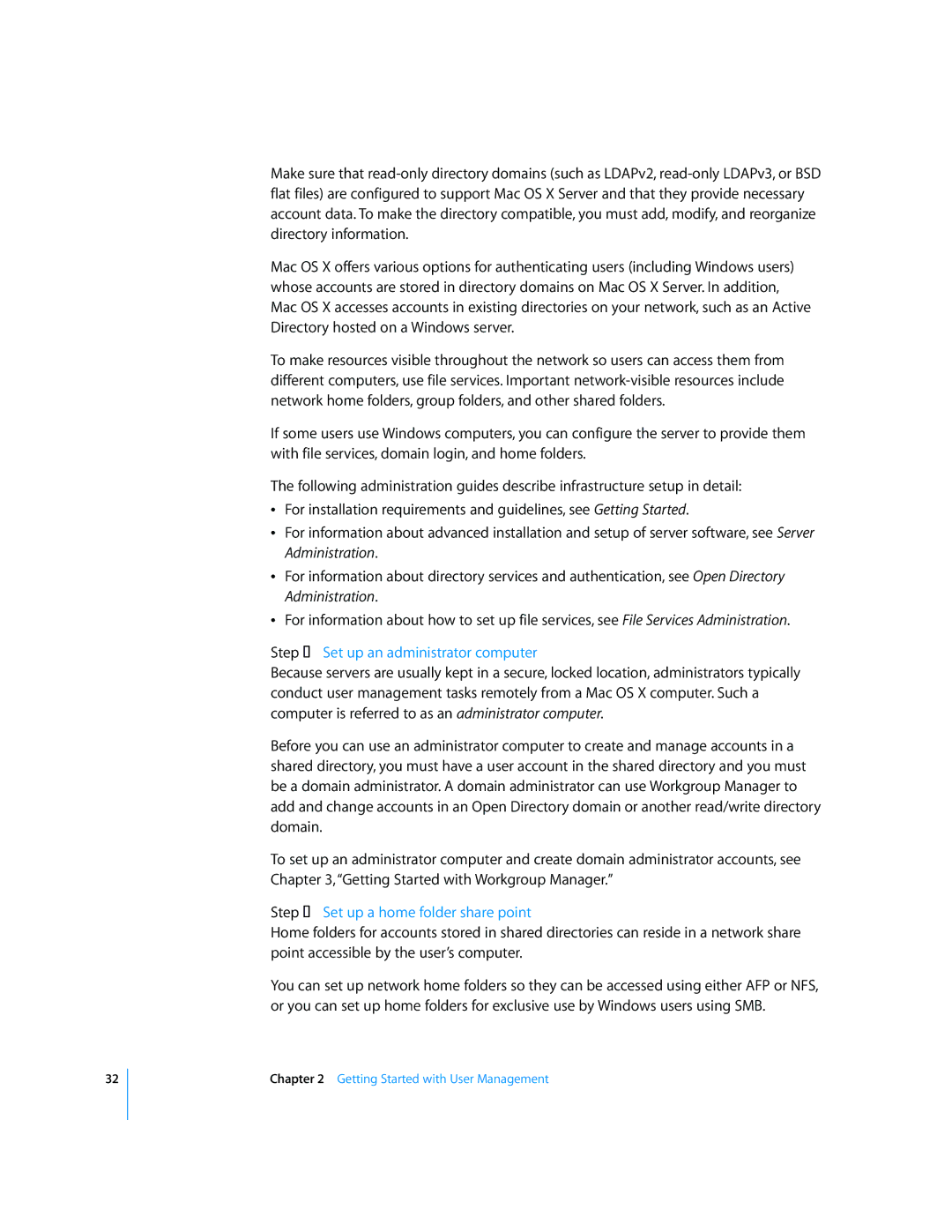32
Make sure that
Mac OS X offers various options for authenticating users (including Windows users) whose accounts are stored in directory domains on Mac OS X Server. In addition, Mac OS X accesses accounts in existing directories on your network, such as an Active Directory hosted on a Windows server.
To make resources visible throughout the network so users can access them from different computers, use file services. Important
If some users use Windows computers, you can configure the server to provide them with file services, domain login, and home folders.
The following administration guides describe infrastructure setup in detail:
ÂFor installation requirements and guidelines, see Getting Started.
ÂFor information about advanced installation and setup of server software, see Server Administration.
ÂFor information about directory services and authentication, see Open Directory Administration.
ÂFor information about how to set up file services, see File Services Administration.
Step 3: Set up an administrator computer
Because servers are usually kept in a secure, locked location, administrators typically conduct user management tasks remotely from a Mac OS X computer. Such a computer is referred to as an administrator computer.
Before you can use an administrator computer to create and manage accounts in a shared directory, you must have a user account in the shared directory and you must be a domain administrator. A domain administrator can use Workgroup Manager to add and change accounts in an Open Directory domain or another read/write directory domain.
To set up an administrator computer and create domain administrator accounts, see Chapter 3, “Getting Started with Workgroup Manager.”
Step 4: Set up a home folder share point
Home folders for accounts stored in shared directories can reside in a network share point accessible by the user’s computer.
You can set up network home folders so they can be accessed using either AFP or NFS, or you can set up home folders for exclusive use by Windows users using SMB.
Chapter 2 Getting Started with User Management
